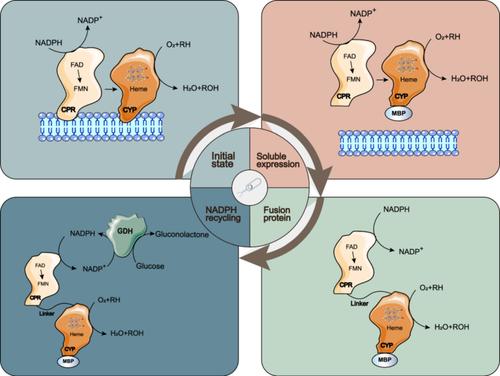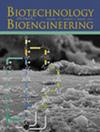Functional Expression and Construction of a Self-Sufficient Cytochrome P450 Chimera for Efficient Steroidal C14α Hydroxylation in Escherichia coli
Abstract
C14-functionalized steroids enabled diverse biological activities in anti-gonadotropin and anticancer therapy. However, access to C14-functionalized steroids was impeded by the deficiency of chemical synthetic methods. Recently, several membrane-bound fungal cytochrome P450s (CYPs) have been identified with steroid C14α-hydroxylation activity. However, the lack of efficient heterologous overexpression strategy hampered their further characterization and molecular engineering. In the present study, sequences of fungi-derived CYP genes encoding putative 14α-hydroxylase were selected and bioinformatically analyzed. Substitution of the N-terminal hydrophobic helix by a soluble maltose binding protein tag significantly enhanced the soluble expression level in Escherichia coli. A novel CYP originated from Bipolaris oryzae was discovered with high steroidal C14α-hydroxylation activity when coupled with the redox partner CPRlun. A catalytically self-sufficient chimeric CYP-CPR was built by intramolecular fusion, and the electronic transfer rate was improved. A coenzyme NADPH regeneration system was finally constructed by the co-expression of glucose dehydrogenase. The developed soluble multi-enzyme cascade biotransformation system supported the selective C14α-hydroxylation toward progesterone with a final titer of 34.54 mg/L, the highest level achieved in E. coli-based heterologous expression system. This study provides insightful ideas on the functional expression of fungi-derived CYPs and promises an efficient C14α-hydroxylation system for steroidal drugs through protein engineering.



 求助内容:
求助内容: 应助结果提醒方式:
应助结果提醒方式:


